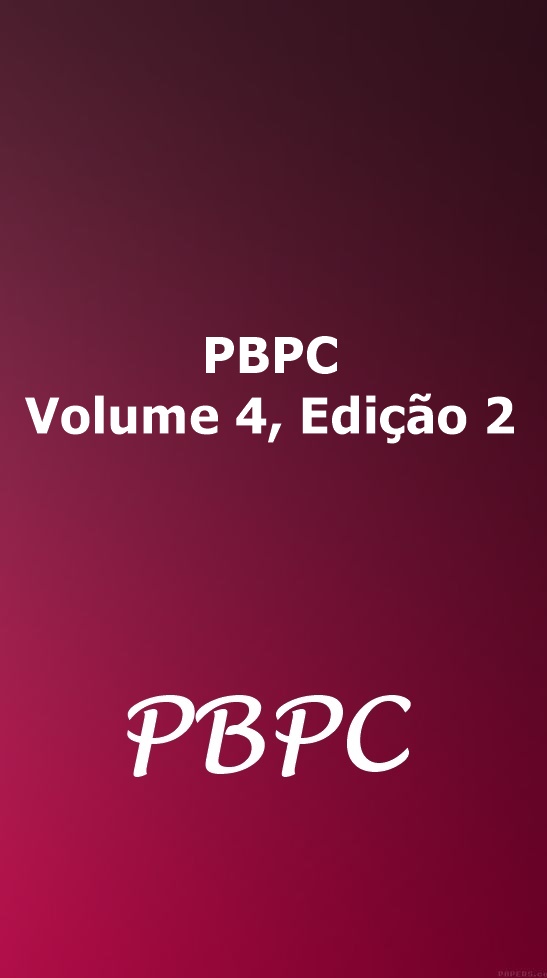INCLUSÃO OU INTEGRAÇÃO? REPENSANDO PRÁTICAS PEDAGÓGICAS PARA UMA EDUCAÇÃO REALMENTE ACESSÍVEL
DOI:
https://doi.org/10.36557/pbpc.v4i2.397Abstract
Nowadays, the terms integration and inclusion are becoming progressively more popular, which favors the expansion of the fight for the rights of students who face obstacles to participation and learning. However, in general, there is a lack of understanding on the part of the population regarding the difference between these concepts and their primary functions, and it is important to highlight that both their meanings and their implementations differ significantly. The purpose of this study is to clarify the distinction between integration and inclusion so that individuals interested in the topic can have access to reading to build new knowledge and understand what actually happens at their family/friend's school. The method used consisted of bibliographic research of articles and books, using Google Scholar and Scielo as search platforms. Our findings indicate that training processes must focus on the conceptions and differences that permeate the integration and inclusion process carried out in educational institutions.
Keywords: integration; inclusion; inclusive education.
Downloads
References
AMANKAY. Capítulo 1: Inclusão: O que é ?. 2017. Acesso: 02.ago. disponível em: https://www.amankay.org.br/educadorinclusivo/images/educador_inclusivo_capitulo1.pdf
BÁFICA, A. P. S. Educação inclusiva: uma análise sobre inclusão escolar. Revista Espaço Acadêmico, v. 11, n. 128, p. 93-101, 21 set. 2011. Acesso: 02.ago. disponível em: https://fenapestalozzi.org.br/educacao/?gad_source=1&gad_campaignid=22323126906&gbraid=0AAAAA95Zl4bAY1ANG-VGd8bXhV_ZDdvJi&gclid=CjwKCAjwq9rFBhAIEiwAGVAZP5LcglV4pQKX6jxSfGPqRjeNl6C048cqniDQZHaBDbyrp-AOl-_qoRoCd38QAvD_BwE
BRASIL. Base Nacional Comum Curricular. 2018. Acesso disponível em: BRASIL. Lei nº 13.146, de 6 de julho de 2015.
Da integração à inclusão social: o estatuto das pessoas com deficiência e a concretização da inclusão pelos direitos assegurados. Revista Jurídica da FA7, 14(1), 89-107. Acesso: 02.ago. disponível em: https://periodicos.uni7.edu.br/index.php/revistajuridica/article/view/261/305#:~:text=O%20Estatuto%20prev%C3%AA%20o%20modelo,possa%20frequentar%20as%20mesmas%20escolas.
FREIRE, Paulo. Educação como prática da liberdade. 23ª ed. Rio de Janeiro: Paz e Terra, 1999.
FREIRE, Paulo. Pedagogia da Autonomia.25º ed.; Paz e Terra, 1996. Acesso disponível em: FREIRE, Paulo. Pedagogia do Oprimido. 17ª ed. Rio de Janeiro, Paz e Terra, 1987.
GARCIA, Ana Keila. Abreu, Waldir. Concepções inclusivas de Paulo Freire na educação dos surdos. V Congresso Paraense de Educação Especial. 2018. Acesso disponível em: LEME, R. S., & DA COSTA FONTES, S. (2017).
Lei Brasileira de Inclusão da Pessoa com Deficiência. Acesso disponível em: CONSTITUIÇÃO FEDERAL DE 1988. Acesso disponível em: DICIONÁRIO AURÉLIO. Inclusão. Acesso disponível em: DICIONÁRIO AURÉLIO. Integração. Acesso : 01 ago. disponível em: https://www.planalto.gov.br/ccivil_03/_ato2015-2018/2015/lei/l13146.htm
MANTOAN, M. T. E. Educação Inclusiva: caminhos, políticas e práticas pedagógicas. In: ______. (Org.). Educação Inclusiva: caminhos, políticas e práticas pedagógicas. São Paulo: Senac, 2003.
MANTOAN, M. T. E. Inclusão escolar: o que é? por quê? como fazer? 3. ed. São Paulo: Summus, 2015.
MANTOAN, Maria Teresa. Inclusão escolar: O que é? Por quê? Como fazer?. Ed Moderna, 2003.
FARIAS, Adenize. Capacitismo e currículo oculto escolar: construindo relações. Conedu. Acesso :23 . jul. disponível em: https://www.editorarealize.com.br/editora/anais/conedu/2019/TRABALHO_EV127_MD1_SA10_ID1994_27092019000648.pdf
SASSAKI, R. K. Inclusão: construindo uma sociedade para todos. 7. ed. Rio de Janeiro: WVA, 1997.
SKLIAR, C. A educação e a pergunta pelos outros: diferença, alteridade, diversidade e... estranhamento. In: ______. (Org.). Educação & Exclusão: abordagens sócio-antropológicas em educação especial. 2. ed. Porto Alegre: Mediação, 2003. p. 107-131.
ZERBATO, Ana Paula. MENDES, Enicéia. Desenho universal para a aprendizagem como estratégia de inclusão escolar. Educação Unisinos. v. 22 n. 2 (2018): Abril/Junho. Acesso: 22 . jul disponível em: https://fenapestalozzi.org.br/educacao/?gad_source=1&gad_campaignid=22323126906&gbraid=0AAAAA95Zl4bAY1ANG-VGd8bXhV_ZDdvJi&gclid=CjwKCAjwq9rFBhAIEiwAGVAZP9ppRmEG40X7D3Q3foLqdAgkKu7Z24fHYbd6afhBqfiFnwftnPNvRxoCgwUQAvD_BwE
Downloads
Published
How to Cite
Issue
Section
License
Copyright (c) 2025 Alessandra Cristina Arruda, Ana Claudia Gomes, Luccas Ramires, Elis Marina Monteiro Moisés, Maísa Aparecida Rossini de Campos, Samanta Cristina de Lima

This work is licensed under a Creative Commons Attribution 4.0 International License.
Você tem o direito de:
- Compartilhar — copiar e redistribuir o material em qualquer suporte ou formato para qualquer fim, mesmo que comercial.
- Adaptar — remixar, transformar, e criar a partir do material para qualquer fim, mesmo que comercial.
- O licenciante não pode revogar estes direitos desde que você respeite os termos da licença.
De acordo com os termos seguintes:
- Atribuição — Você deve dar o crédito apropriado , prover um link para a licença e indicar se mudanças foram feitas . Você deve fazê-lo em qualquer circunstância razoável, mas de nenhuma maneira que sugira que o licenciante apoia você ou o seu uso.
- Sem restrições adicionais — Você não pode aplicar termos jurídicos ou medidas de caráter tecnológico que restrinjam legalmente outros de fazerem algo que a licença permita.

